Special Report
The 29 Countries the US Government Doesn't Want You to Visit
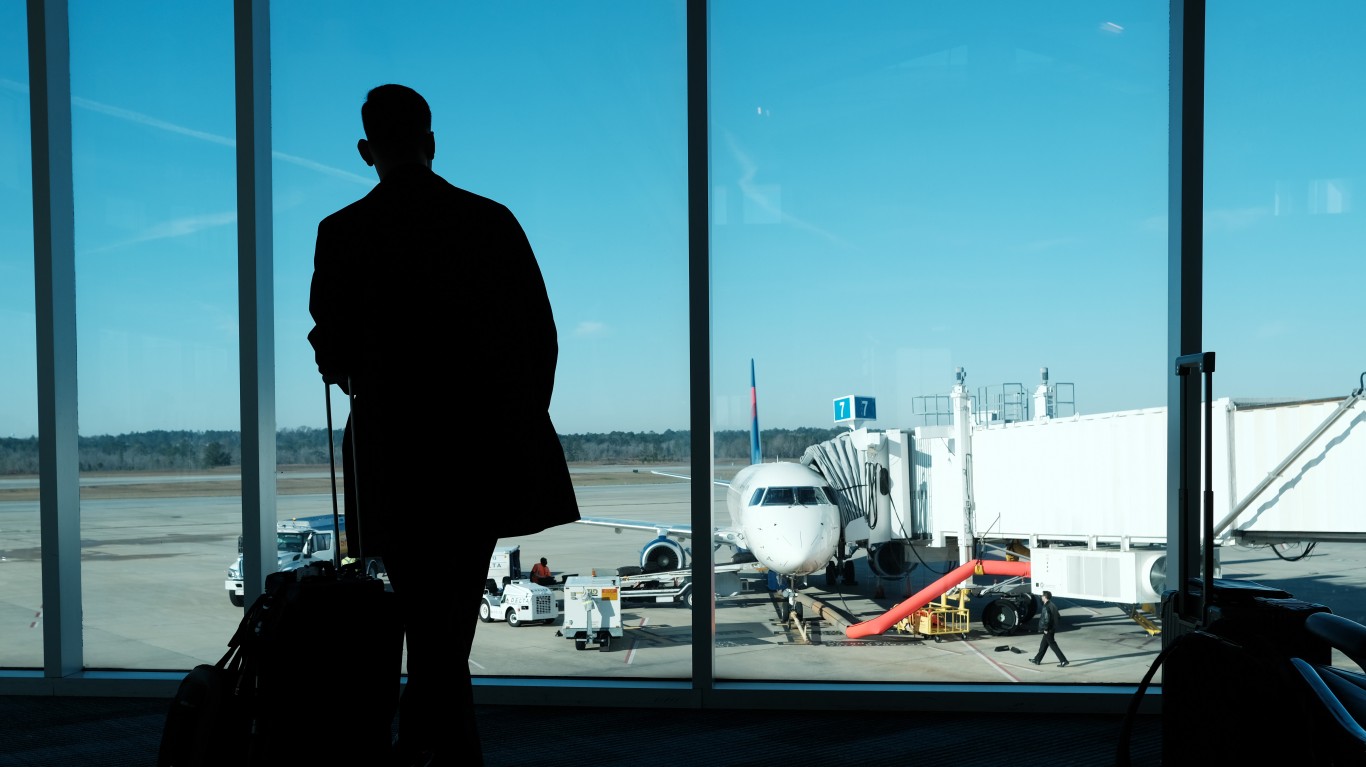
Published:
Last Updated:

Before the global COVID-19 pandemic, international travel was on the rise. By mid-March, as it became apparent COVID-19 was spreading globally, international flights from most countries had dropped significantly compared to previous years.
Global travel remains relatively low. Worldwide scheduled flights during the first part of this week were 46.5% lower than in the same week last year, according to research published by Statista.
Some countries have relaxed lockdown measures, but many travel restrictions remain in place around the world and within countries. Click here to see a state by state guide to traveling within the United States during the pandemic.
The State Department issued on Jan. 27 its highest travel warning level for Hubei, China, the location of Wuhan — where the COVID-19 pandemic is thought to have originated. As of Nov. 11, the State Department had active Level 4: Do Not Travel advisories for 29 countries. COVID-19 is cited in nearly every advisory.
Other common reasons for the government’s highest travel guidance include kidnapping, health risks, violent crimes, potential for terrorism and civil unrest, and armed conflicts. (Here are America’s largest military bases).
The countries deemed most dangerous to American travelers span the globe and vary considerably in population and economy size. The Bahamas, with a population of around 390,000, and the Central African Republic, with a GDP of just $2.22 billion both have level 4 advisories alongside India, the world’s second largest population and fifth largest economy.
Click here to see the 29 countries the U.S. government doesn’t want you to go.
24/7 Wall St. compiled a list of the 29 nations for which the State Department has a standing Level 4 warning to identify the countries the U.S. government does not want you to go to. All listed travel advisories are the latest available guidance from the U.S. government. Each was last updated between Aug. 6 and Nov. 9, 2020. We also reviewed World Bank data on population, GDP in current U.S. dollars, and GDP per capita (PPP) in international dollars for the most recent available year.
The U.S. Department of State has four advisory levels for American citizens traveling abroad: Level 1 — Exercise Normal Precautions; Level 2 — Exercise Increased Caution; Level 3 — Reconsider Travel; and, Level 4 — Do Not Travel. Level 4 is the highest advisory level due to greater likelihood of life-threatening risks.

French Guiana
> Last updated: Aug 6, 2020
> Population: 290,691
> GDP, current US$: Not available
> GDP per capita, PPP: Not available
French Guiana is one of 29 countries in the world with a level 4 do not travel advisory — the highest advisory level the U.S. government issues. As is the case with most travel advisories issued this year, Americans are advised to not travel to French Guiana due to COVID-19.
There have been 10,729 confirmed cases of COVID-19 with 70 deaths in French Guiana since January. Adjusted to its relatively small population of 290,691, the French territory’s measure of COVID-19 cases per million is among the highest in South America and exceeds the U.S. count of nearly 30,000 cases per million U.S. residents. According to The U.S. Department of State, medical care and hospital facilities in French Guiana are limited. The Centre Hospitalier Andree Rosemon in Cayenne is the only hospital with intensive care and trauma units.
[in-text-ad]
North Korea
> Last updated: Aug 6, 2020
> Population: 25.67 million
> GDP, current US$: $40.0 billion
> GDP per capita, PPP: $1,700
Even if the U.S. government travel advisory for North Korea was at a lower level, the country would be nearly impossible to travel to for the vast majority of Americans. North Korea is one of the few countries in the world, even among the ones on this list, with no U.S. diplomatic or consular relations, and U.S. passports are not valid for travel to, in, or through the country without special validation from the Department of State. Americans are advised to not travel to North Korea due to the serious risk of arrest and imprisonment.
While the country has reported no data on COVID-19 cases and deaths, COVID-19 is also listed as a reason for the maximum advisory level. This is due in part to limited access by Americans to emergency services within the country.

Syria
> Last updated: Aug 6, 2020
> Population: 17.07 million
> GDP, current US$: Not available
> GDP per capita, PPP: Not available
With poor U.S.-Syria relations spanning decades, Americans are advised to avoid travel to Syria due to terrorism, civil unrest, kidnapping, and armed conflict. The country has been on the U.S.’s list of state sponsors of terrorism since the list’s creation in 1979. The United States closed its embassy in Damascus in early 2012, about a year after the civil war in the country broke out.
The danger of travelling to or within Syria would be relatively dangerous for anyone — not just Americans. The Syrian conflict that has led to more than half a million deaths and displaced more than 12 million people entered its 10th year this summer.
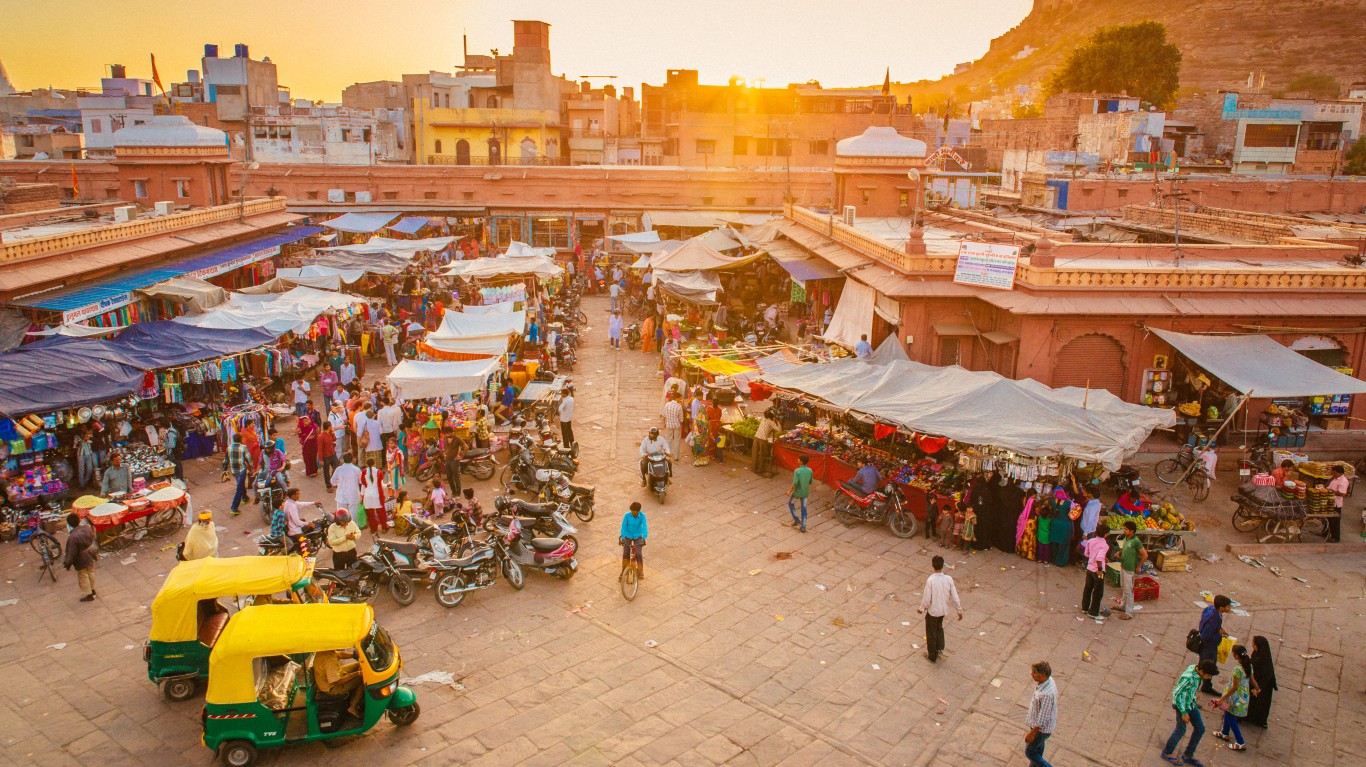
India
> Last updated: Aug 6, 2020
> Population: 1.37 billion
> GDP, current US$: $2.88 trillion
> GDP per capita, PPP: $7,034
The State Department advises against all travel to India because of COVID-19. India’s load of active COVID-19 cases has consistently declined in recent weeks, but the country has had among the fastest growing cases in the world with new daily cases reaching nearly 100,000 during the middle of September.
Numerous bloody conflicts have been reported in recent months along the border with Pakistan — the long disputed region known as the Line of Control separating the two nuclear-armed nations. In addition to the large sections of the region already barred to tourists by the Indian government, American travelers are advised to avoid the state of Jammu and Kashmir with the exception of the eastern Ladakh region. Violence is also common in the tourist destinations of Srinagar, Gulmarg, and Pahalgam in the Kashmir Valley.
[in-text-ad-2]

Brazil
> Last updated: Aug 6, 2020
> Population: 211.05 million
> GDP, current US$: $1.84 trillion
> GDP per capita, PPP: $15,259
The State Department issued the highest travel advisory level for Brazil, Level 4: Do Not Travel, due to the coronavirus pandemic. After the U.S. and India, Brazil has the highest number of confirmed coronavirus cases. At about 27,000 cases per million residents, the South American country has one of the highest incidence rates of COVID-19 in the world. The CDC has issued a Level 3 Travel Health Notice for Brazil due to COVID-19 and warns that medical care may be limited to those who get sick.
Americans are advised against traveling to informal housing neighborhoods, such as favelas, or the administrative regions of Ceilandia, Santa Maria, Sao Sebastiao, and Paranoa due to high crime rates.
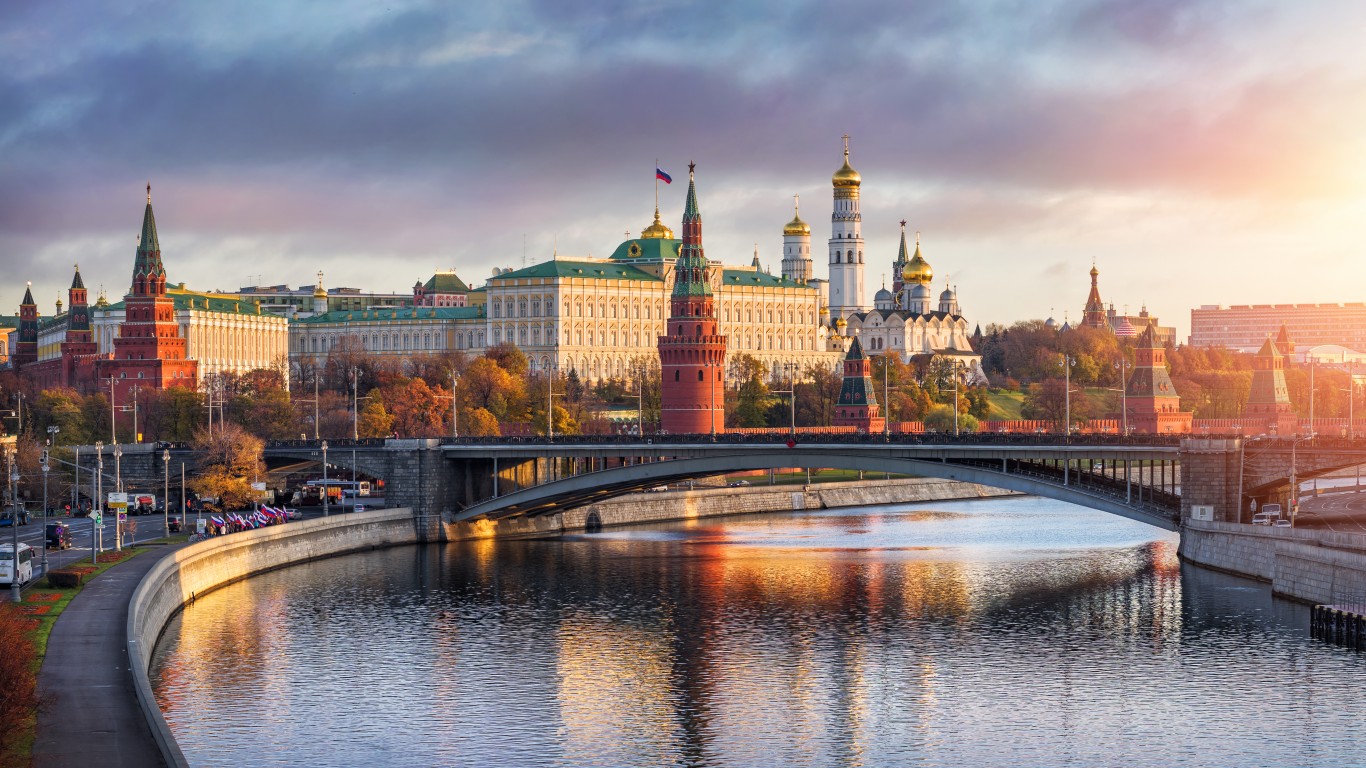
Russia
> Last updated: Aug 6, 2020
> Population: 144.37 million
> GDP, current US$: $1.70 trillion
> GDP per capita, PPP: $29,181
The country has the fifth highest number of cumulative coronavirus cases since the pandemic began, with over 1.8 million confirmed cases. The U.S. embassy in Moscow warns of a resurgence in COVID-19 cases — cases have grown quickly over the last two months. Several of Russia’s regions, including the capital of Moscow, have incidence rates of nearly 4,000 cases per 100,00 people. The State Department may have limited capacity to assist American citizens in the event of an emergency because of the Russian government-imposed reduction on U.S. diplomatic personnel.
Russia recently announced that early results from its phase three clinical trial of a coronavirus vaccine being developed in the country is 92% effective.
[in-text-ad]
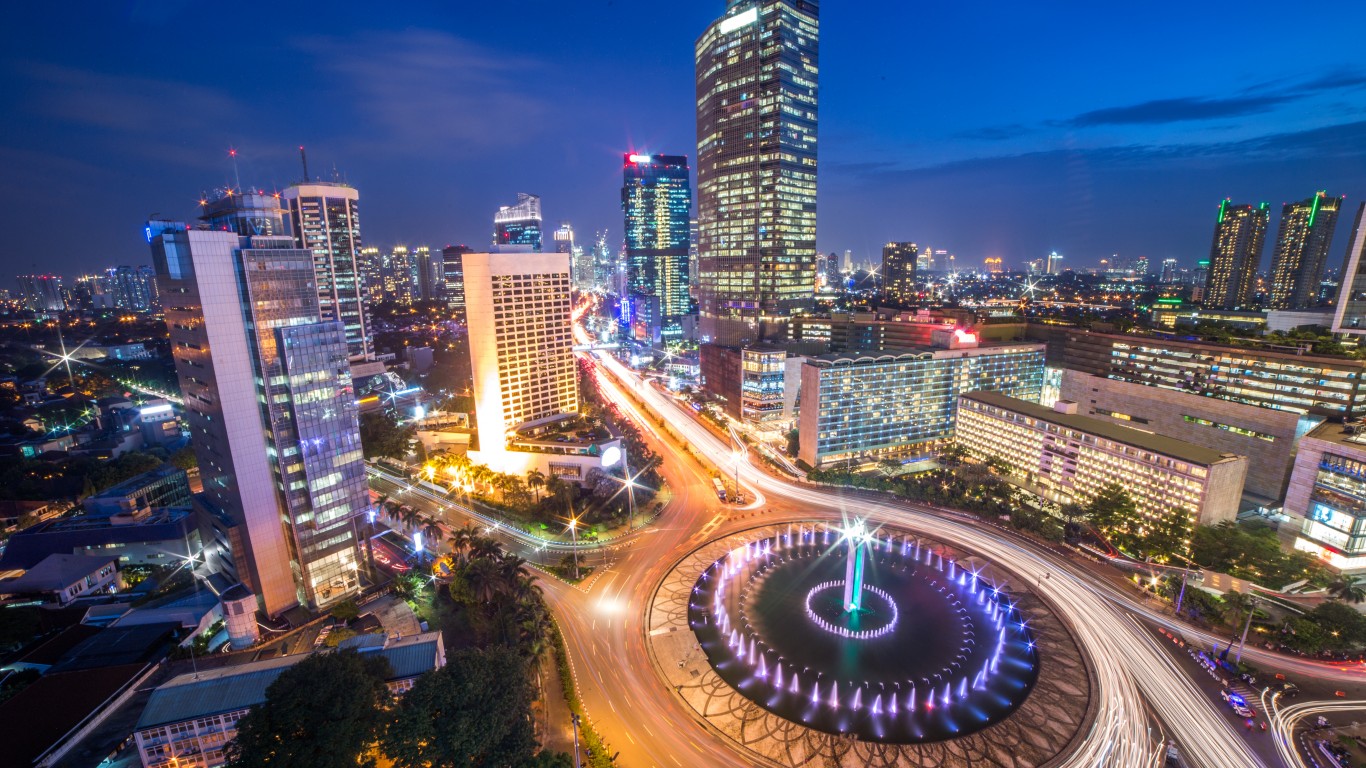
Indonesia
> Last updated: Aug 6, 2020
> Population: 270.63 million
> GDP, current US$: $1.12 trillion
> GDP per capita, PPP: $12,302
Like several other countries on this list, the State Department has issued a Do Not Travel advisory for Indonesia for for several reasons — COVID-19, terrorism, and natural disasters. There have been over 450,000 infections and close to 15,000 coronavirus-related deaths reported in the country since the pandemic began. The CDC has issued a Level 3 Travel Health Notice for Indonesia due to COVID-19, warning that medical care may be limited.
The State Department warns of active terrorist groups across the country that target hotels, bars, nightclubs, markets, and restaurants, which are all places that tourists frequent.
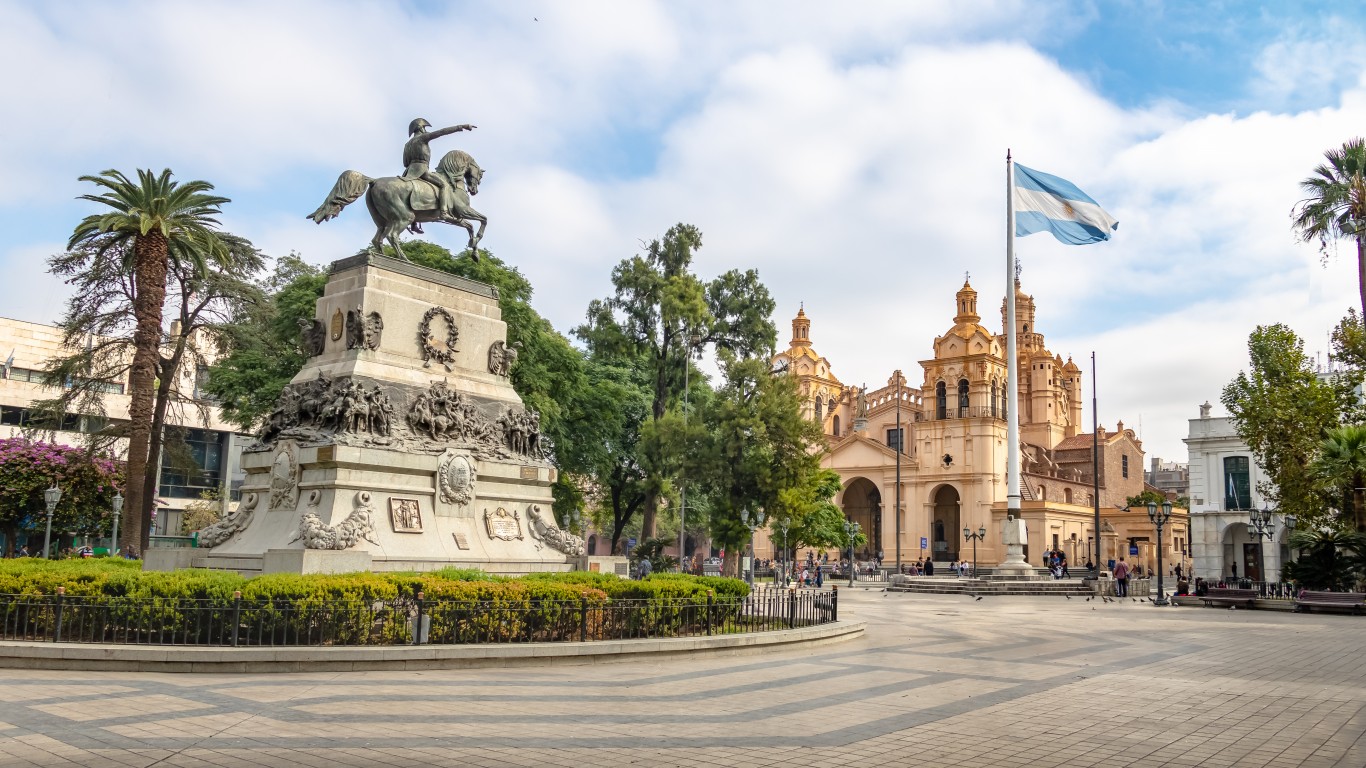
Argentina
> Last updated: Aug 6, 2020
> Population: 44.94 million
> GDP, current US$: $449.66 billion
> GDP per capita, PPP: $22,947
Argentina is the second most affected South American country by the coronavirus pandemic. It has one of the highest incidence rates in the world at about 28,000 cases per million residents. As of Nov. 11, 2020, there have been nearly 1.3 million confirmed cases of the coronavirus since the pandemic began. Just three weeks ago, Argentina passed the 1 million case mark.
Travelers to Argentina may experience closures, travel bans, and stay-at-home orders. A national quarantine order is in effect at least until Nov. 29, 2020. Travel within the country is restricted for everyone. Only people with international flight reservations are allowed to travel to the capital and only within 24 hours of their flight.
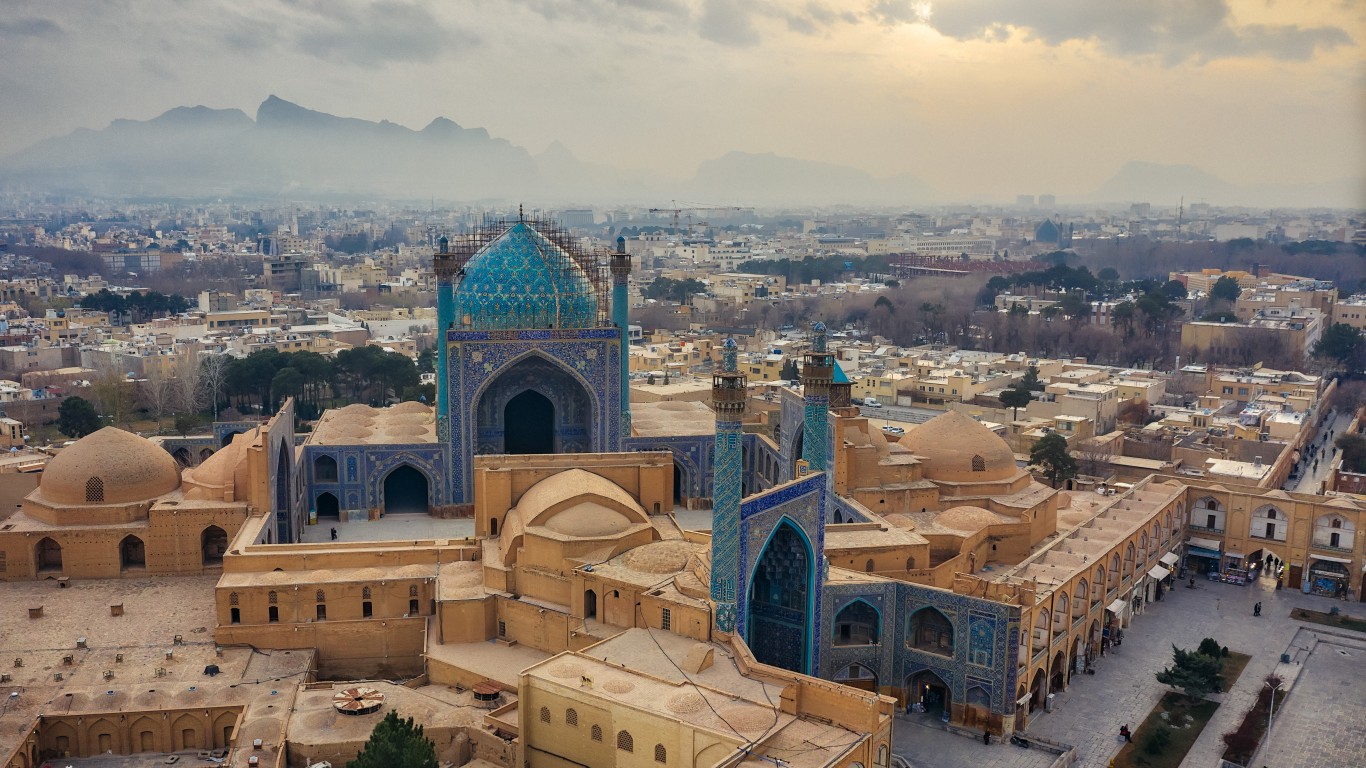
Iran
> Last updated: Aug 6, 2020
> Population: 82.91 million
> GDP, current US$: $445.35 billion
> GDP per capita, PPP: $14,536
COVID-19, which is currently spreading at peak levels in Iran with about 10,000 new cases a day, is one reason the country is on the State Department’s Do Not Travel list. The United States does not have diplomatic relations with Iran and cannot provide emergency services for Americans in the country as there is no U.S. diplomatic envoy in the country.
Iranian authorities regularly detain and imprison Americans, particularly those with dual citizenship, under espionage charges. They often target students, journalists, and business travelers.
[in-text-ad-2]
Cuba
> Last updated: Aug 6, 2020
> Population: 11.33 million
> GDP, current US$: $100.02 billion
> GDP per capita, PPP: $8,822
Americans should not be traveling to Cuba due to the high risk of COVID-19, according to the State Department’s Do Not Travel advisory. The island country is reporting on average 40 new infections a day, which is about 61% of the peak from just a week ago. The U.S. embassy in Havana is operating with reduced staffing, which may lead to a delayed response should any American citizens need assistance during an emergency.
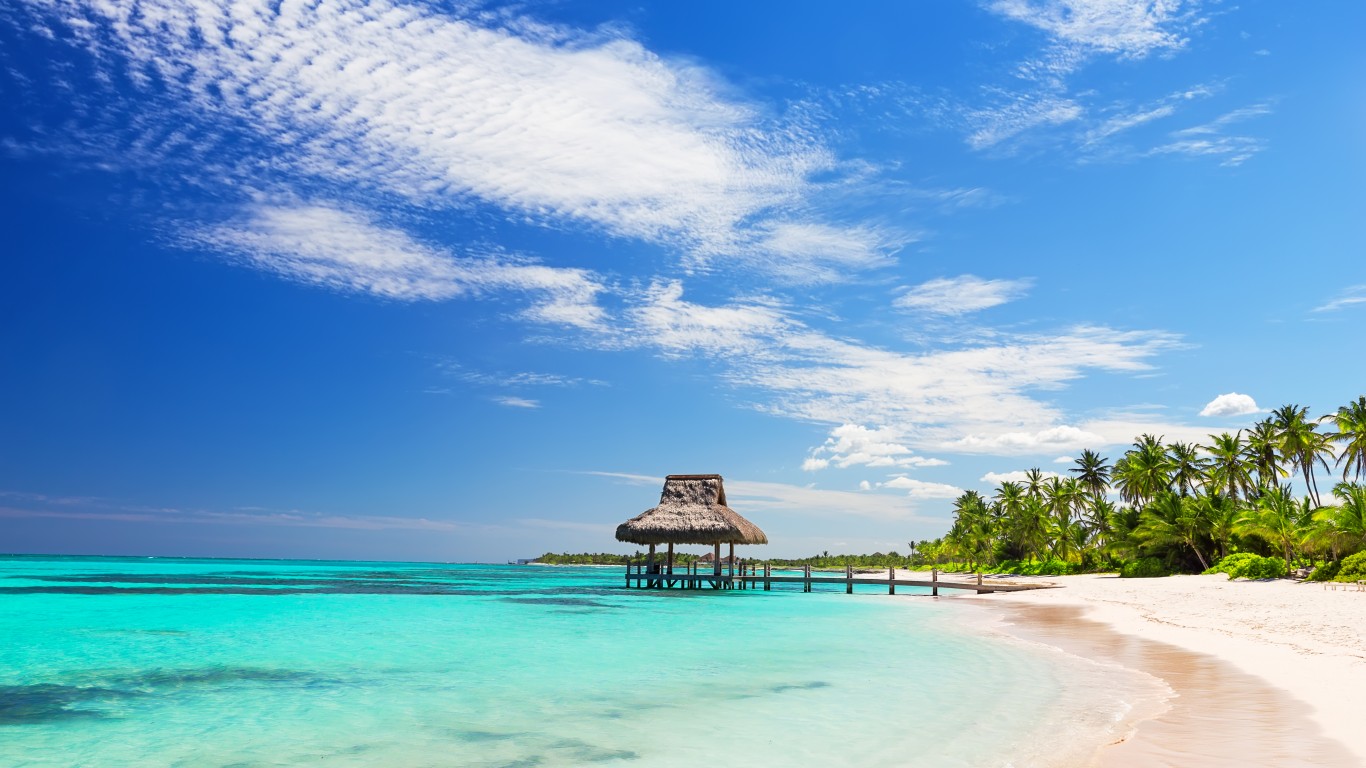
Dominican Republic
> Last updated: Aug 6, 2020
> Population: 10.74 million
> GDP, current US$: $88.94 billion
> GDP per capita, PPP: $19,182
Like many countries on this list, the State Department has issued a Level 4: Do Not Travel advisory for the Dominican Republic solely because of COVID-19. Should anyone contract the virus, medical care is limited, with some hospitals at or near full capacity, according to the U.S. embassy in the country. Services at the embassy have been suspended due to the pandemic.
The CDC has issued a Level 3 Travel Health Notice for the Dominican Republic. There have been over 130,000 confirmed cases of the virus since the start of the coronavirus epidemic.
[in-text-ad]

Oman
> Last updated: Aug 6, 2020
> Population: 4.97 million
> GDP, current US$: $76.98 billion
> GDP per capita, PPP: $29,052
The State Department’s Do Not Travel advisory for Oman is due to the coronavirus pandemic in the sultanate on the coast of the Arabian Peninsula. Though currently the country is currently reporting just 21% of its new daily cases peak reported in mid-July, the overall incidence rate is among the highest in Asia and the Middle East at about 24,000 coronavirus cases per million residents. There have been about 120,000 infections and over 1,300 coronavirus-related deaths reported in the country since the pandemic began.
Potential travelers are warned not to travel near Oman’s border with Yemen due to terrorism and armed conflict.
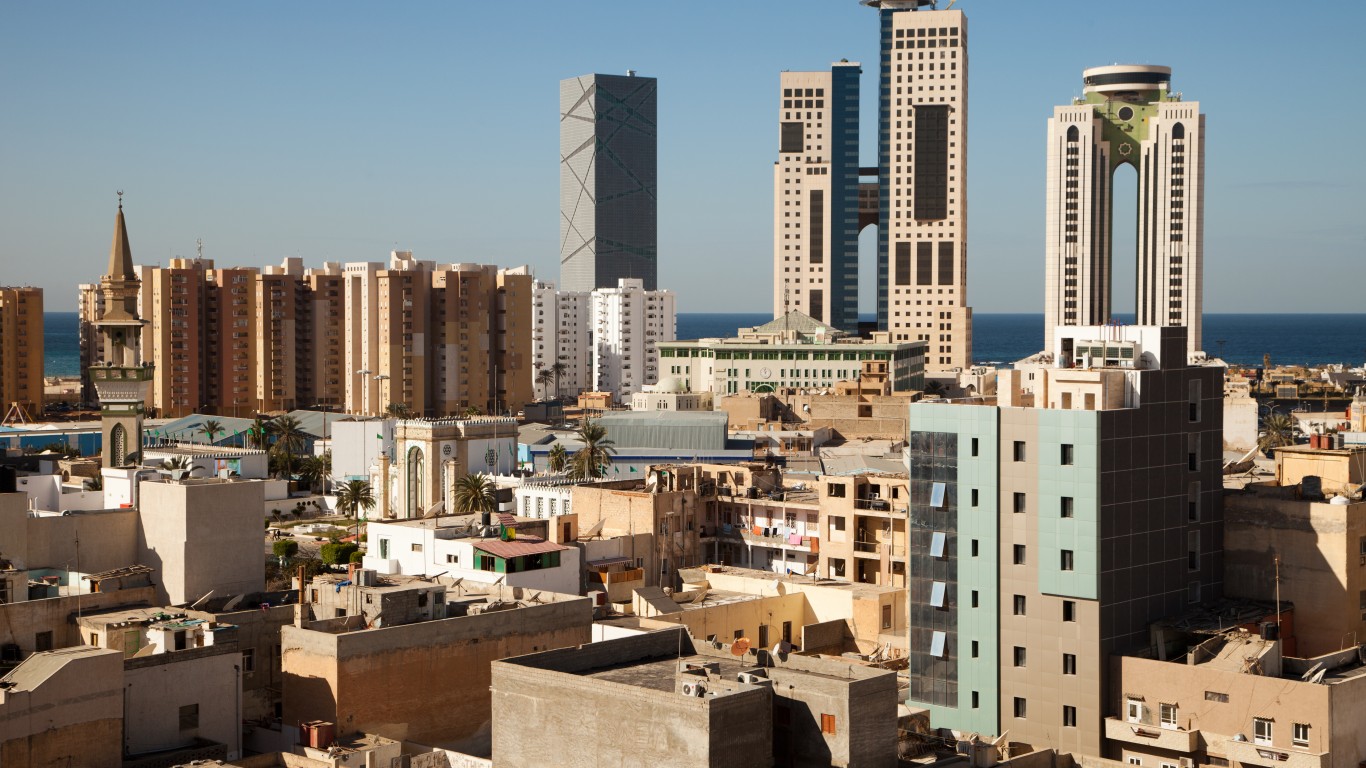
Libya
> Last updated: Aug 6, 2020
> Population: 6.78 million
> GDP, current US$: $52.08 billion
> GDP per capita, PPP: $15,803
In addition to high risk due to COVID-19, the State Department is advising against traveling to Libya, which has become an unstable country since strongman Col. Muammar Gaddafi was overthrown and killed in 2011. The U.S. government advises Americans not to travel to the North African nation, which is racked by crime, terrorism, civil unrest, kidnapping, and armed conflict.
The United States’ ability to provide services to American citizens in Libya is limited because the U.S. embassy in Tripoli suspended operations in July 2014.
Yemen
> Last updated: Aug 6, 2020
> Population: 29.16 million
> GDP, current US$: $27.59 billion
> GDP per capita, PPP: $3,689
The State Department has a standing level 4 travel warning, the highest level, for Yemen due largely to COVID-19 and the ongoing civil war. Though Yemen’s official coronavirus incidence rate is among the lowest in the Middle East and Asia, the ongoing military conflict has destroyed essential infrastructure and jeopardized supplies of medicine, leading to a collapse of the health system.
The U.S. government warns of active terrorists groups that frequently conduct attacks at transportation hubs, markets, and local government facilities. Employees of Western organizations may be at higher risk of terrorist attacks or kidnapping.
[in-text-ad-2]

Mali
> Last updated: Aug 6, 2020
> Population: 19.66 million
> GDP, current US$: $17.51 billion
> GDP per capita, PPP: $2,424
The State Department has issued a Level 4: Do not travel advisory for Mali, citing COVID-19, crime, terrorism, and kidnapping concerns. The U.S. government cannot help U.S. citizens in the northern and central regions of Mali because travel by U.S. diplomatic personnel to these regions is restricted due to security concerns.
There have been 3,753 COVID-19 infections reported in Mali since the pandemic began. The landlocked country in West Africa is reporting an average of 24 new infections a day, which is 53% of the peak at the end of May.
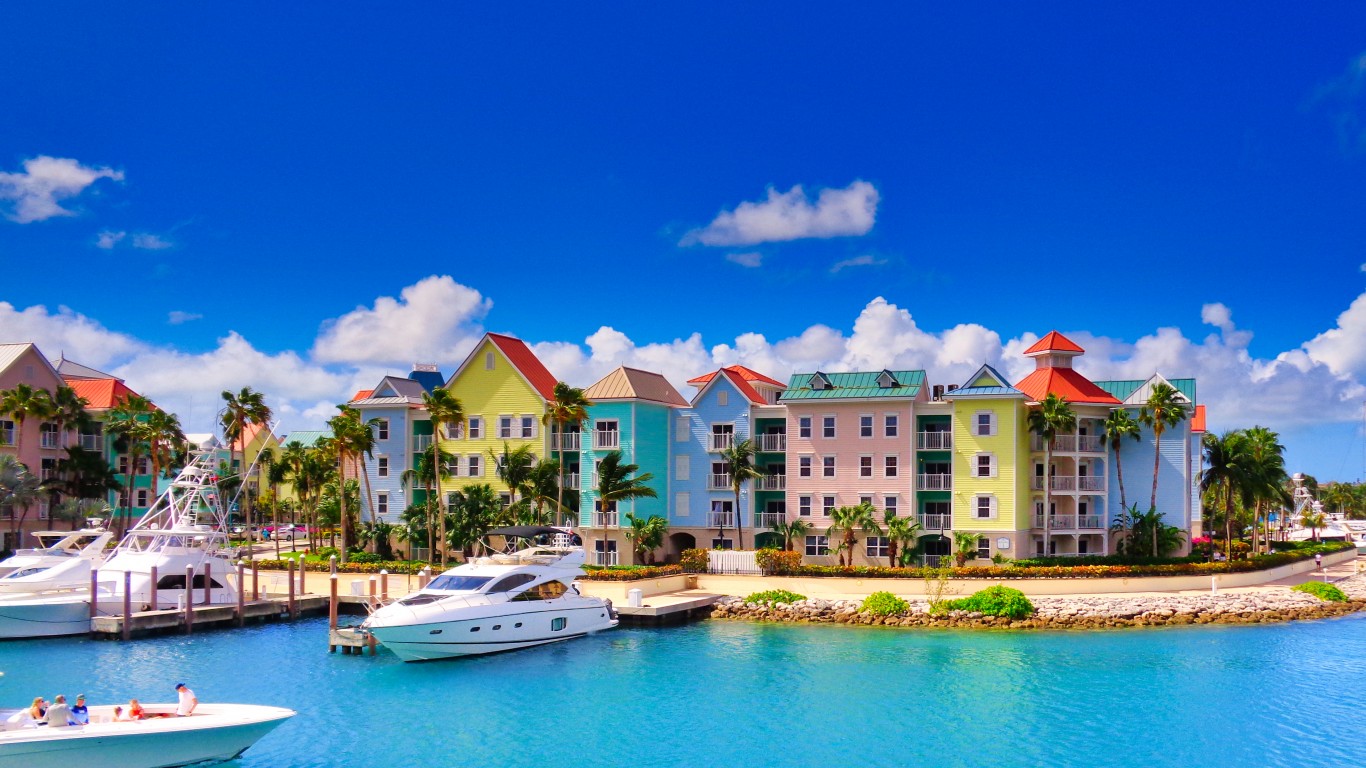
The Bahamas
> Last updated: Aug 6, 2020
> Population: 389,482
> GDP, current US$: $12.83 billion
> GDP per capita, PPP: $37,266
The State Department has issued a Level 4: Do not travel advisory for the Bahamas, citing health and safety measures and COVID-19-related conditions. The CDC has issued a Level 3 Travel Health Notice for the Bahamas due to the coronavirus pandemic, citing high COVID-19 risk. Though there have only been over 7,000 confirmed cases of the virus since the pandemic began, adjusted to the population, the incidence rate is close to 18,000 per million residents, among the highest in the Caribbean.
[in-text-ad]
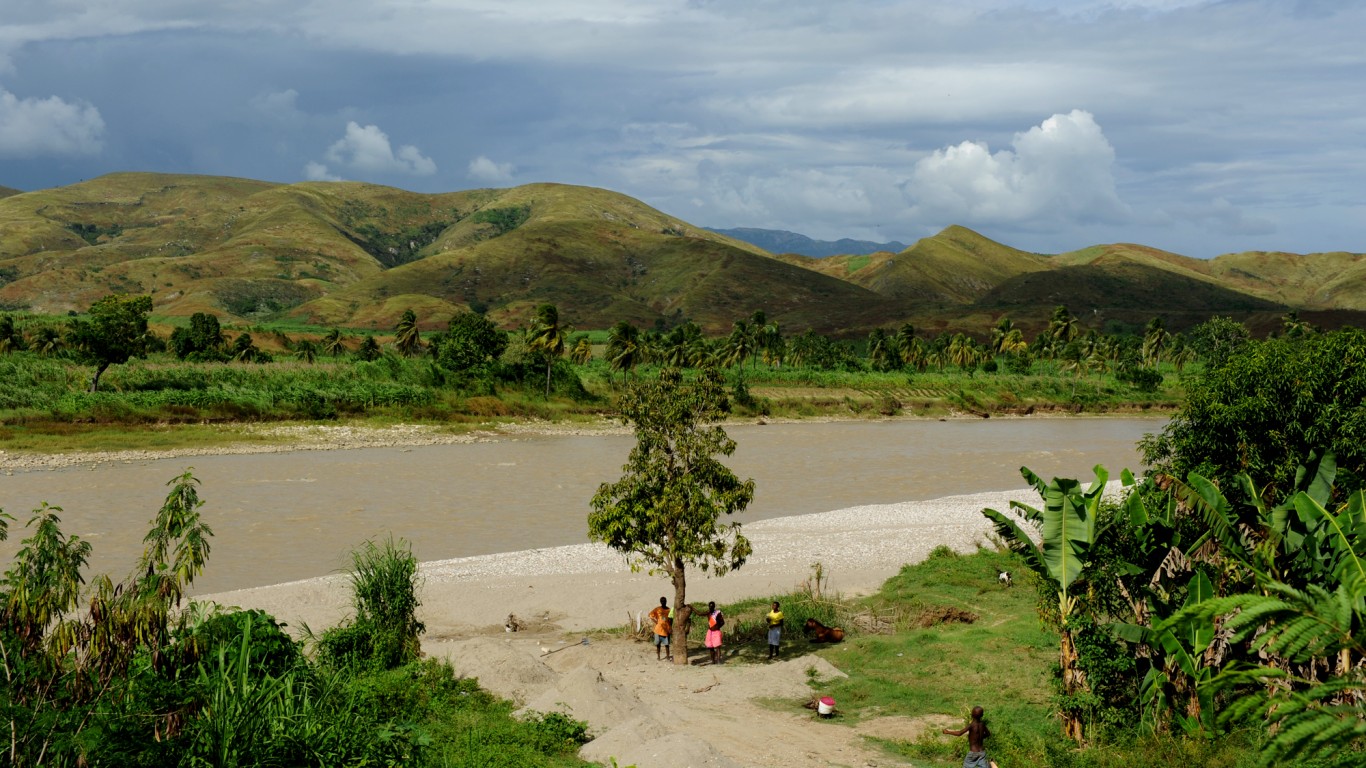
Haiti
> Last updated: Aug 6, 2020
> Population: 11.26 million
> GDP, current US$: $8.50 billion
> GDP per capita, PPP: $1,801
The U.S. Department of State has issued a Do Not Travel advisory for Haiti for several reasons, but unlike most countries on this list, COVID-19 is not the main concern. The country is reporting an average of six new cases a day, which is just 3% of the peak in early June â and cases have been falling.
The main reason for the advisory is violent crime. The State Department warns that the ability for police and emergency services to adequately respond to crime and other incidents is lacking. Tourists are frequently targeted for robbery in and around the capital’s airport.
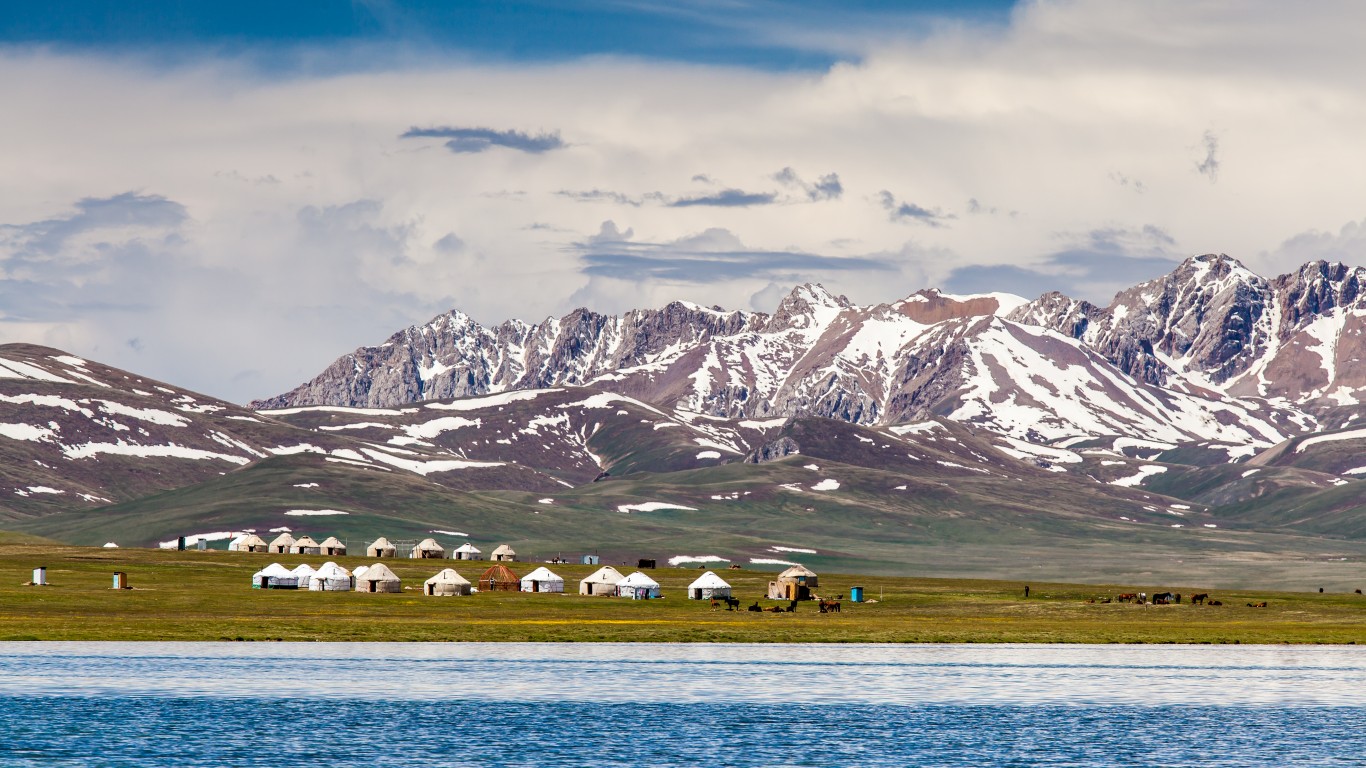
The Kyrgyz Republic
> Last updated: Aug 6, 2020
> Population: 6.46 million
> GDP, current US$: $8.45 billion
> GDP per capita, PPP: $5,471
The Kyrgyz Republic, commonly known as Kyrgyzstan, is on the list of countries with the highest advisory level issued by the Department of State because of a high COVID-19 risk. There is currently a surge in coronavirus cases across the country, according to the U.S. embassy in the nation. The country is seeing an incidence rate of about 10,000 cases per million people, one of the highest rates among neighboring countries. There have been close to 65,00 confirmed coronavirus cases since the outbreak started.
Guyana
> Last updated: Aug 6, 2020
> Population: 782,766
> GDP, current US$: $4.28 billion
> GDP per capita, PPP: $10,105
The U.S. Department of State has issued a Level 4: Do Not Travel advisory for Guyana because of COVID-19 and the common occurrence of violent crimes, including armed robbery and homicide. Street robberies and home invasions are rampant.
As of Nov. 11, 2020 there have been over 4,600 confirmed coronavirus cases in the country on the northern mainland of South America. The incidence rate in the country is 5,700 cases per million residents. According to the CDC, the COVID-19 risk is high and medical care for those who get sick may be limited.
[in-text-ad-2]

Bhutan
> Last updated: Aug 6, 2020
> Population: 763,092
> GDP, current US$: $2.45 billion
> GDP per capita, PPP: $11,613
Bhutan is on the list of countries the U.S. government advises Americans not to travel to because of the risk of COVID-19. There have been a total of 364 confirmed cases in the landlocked and remote Himalayan kingdom. The incidence rate is about 477 cases per million people, among the lowest in the region. However, if people get sick, medical care and services may be limited, according to the CDC.

Burundi
> Last updated: Aug 11, 2020
> Population: 11.53 million
> GDP, current US$: $3.01 billion
> GDP per capita, PPP: $783
The risk of COVID-19 in Burundi is high, according to the CDC, and the country lacks adequate medical and fire emergency services, according to the Department of State.
Crime and political violence are also relatively common in the African nation. According to the State Department, local police are often ill-equipped to effectively respond to such incidents. Because of travel restrictions on U.S. embassy personnel, travelers should not expect emergency assistance in several of Burundi’s provinces, according to the travel advisory.
[in-text-ad]

Iraq
> Last updated: Aug 12, 2020
> Population: 39.31 million
> GDP, current US$: $234.09 billion
> GDP per capita, PPP: $11,332
Iraq is one of the Arab countries with the most COVID-19 cases (population-adjusted) in the world, with about 13,000 cases per million residents. Over half a million people have tested positive since the start of the pandemic. The U.S. embassy in Baghdad, Iraq’s capital, has been closed since March 2020 due to restricted travel conditions because of the coronavirus spread.
In addition to COVID-19-related bans, closures, and quarantine mandates, travelers in Iraq face a high risk of terrorism, armed conflict, and kidnapping. Several insurgent groups are active and regularly attack both security forces and civilians, according to the State Department.
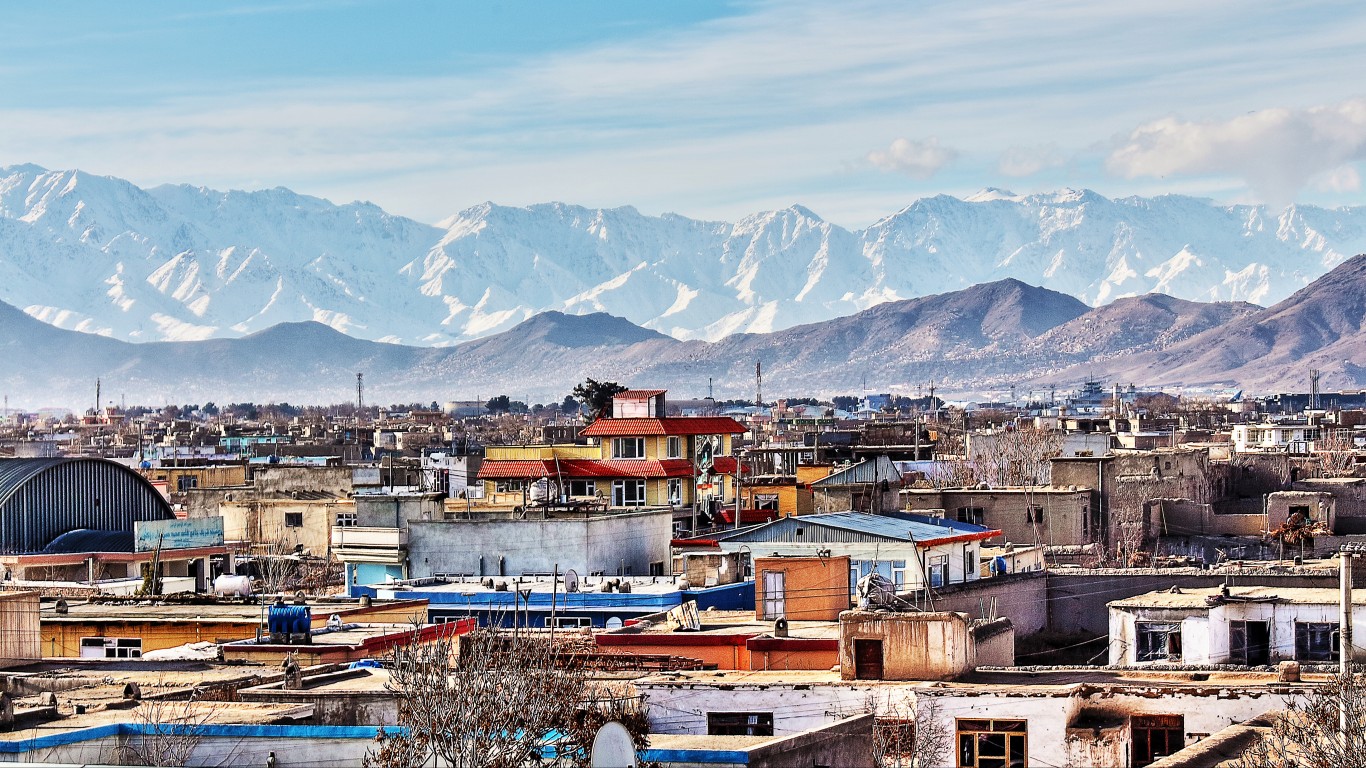
Afghanistan
> Last updated: Aug 24, 2020
> Population: 38.04 million
> GDP, current US$: $19.10 billion
> GDP per capita, PPP: $2,294
The State Department has issued a Level 4: Do Not Travel advisory for Afghanistan due to COVID-19; the high risk of terrorism and kidnappings; and armed conflict. Though the country’s incidence rate of COVID-19 is about 1,100 cases per million people, one of the lowest among countries in Asia, testing rates are very low, possibly indicating that the true number of cases may be much higher. The CDC has issued a Level 3 Travel Health Notice.
Hostage taking, suicide bombings, and kidnappings are relatively common in Afghanistan because of the ongoing military conflict. Active terrorist groups often target government buildings, restaurants, hotels, NGO offices, tourist locations, and public gatherings, according to the State Department.
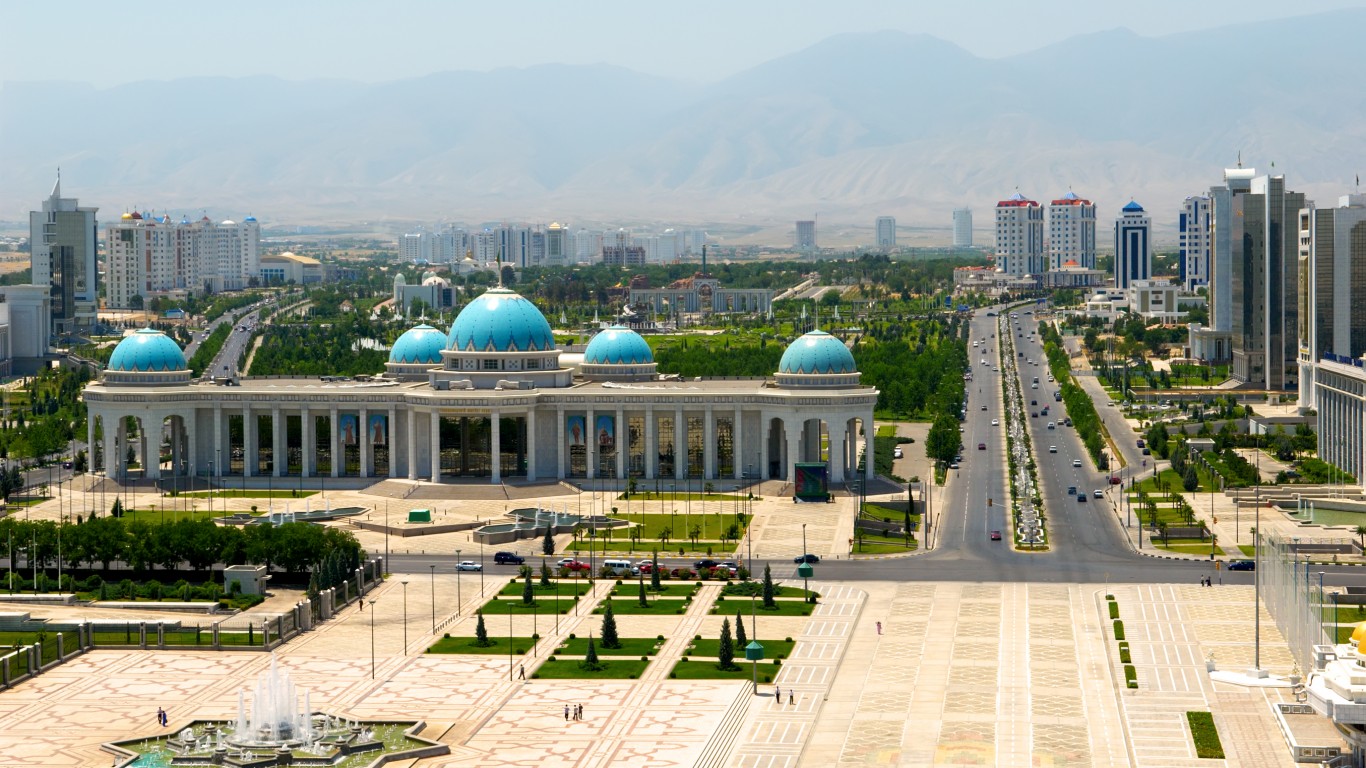
Turkmenistan
> Last updated: Oct 5, 2020
> Population: 5.94 million
> GDP, current US$: $40.76 billion
> GDP per capita, PPP: $15,196
Turkmenistan is on the list of countries with travel advisories due to COVID-19, though the risk is unknown as the country has not reported any cases to the WHO. Turkmenistan is often criticized for its lack of transparency. (The only other country to officially report no cases of the novel coronavirus is North Korea.) Human rights advocates claim medical workers have been silenced.
International commercial flights into Turkmenistan have been suspended, according to the State Department. The agency warns that it is unable to provide assistance to U.S. citizens, who may face border closures, travel bans, stay-at-home orders, quarantine procedures, and other emergency conditions due to COVID-19.
[in-text-ad-2]
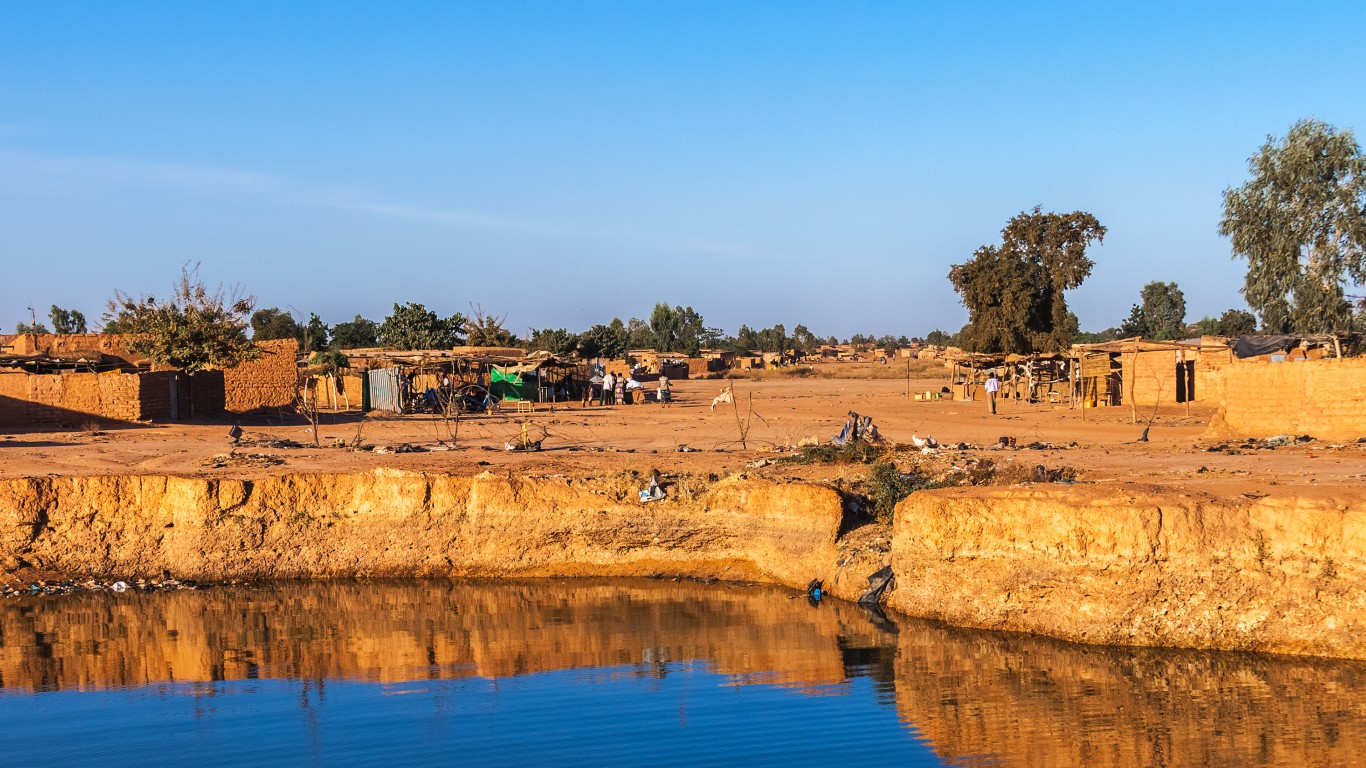
Burkina Faso
> Last updated: Oct 19, 2020
> Population: 20.32 million
> GDP, current US$: $15.75 billion
> GDP per capita, PPP: $2,280
The State Department advises against any travel to Burkina Faso due to COVID-19 and high risk for terrorism, violent crimes, and kidnapping. The CDC has issued a Level 3 Travel Health Notice, the highest advisory level issued by the agency, due to COVID-19.
The State Department’s Do No Travel warning applies to areas in the northern part of Burkina Faso in particular, where a state of emergency order has been issued in some regions. The U.S. government cannot provide emergency services to Americans in most parts of Burkina Faso as U.S. government officials are restricted from traveling outside of the capital city.
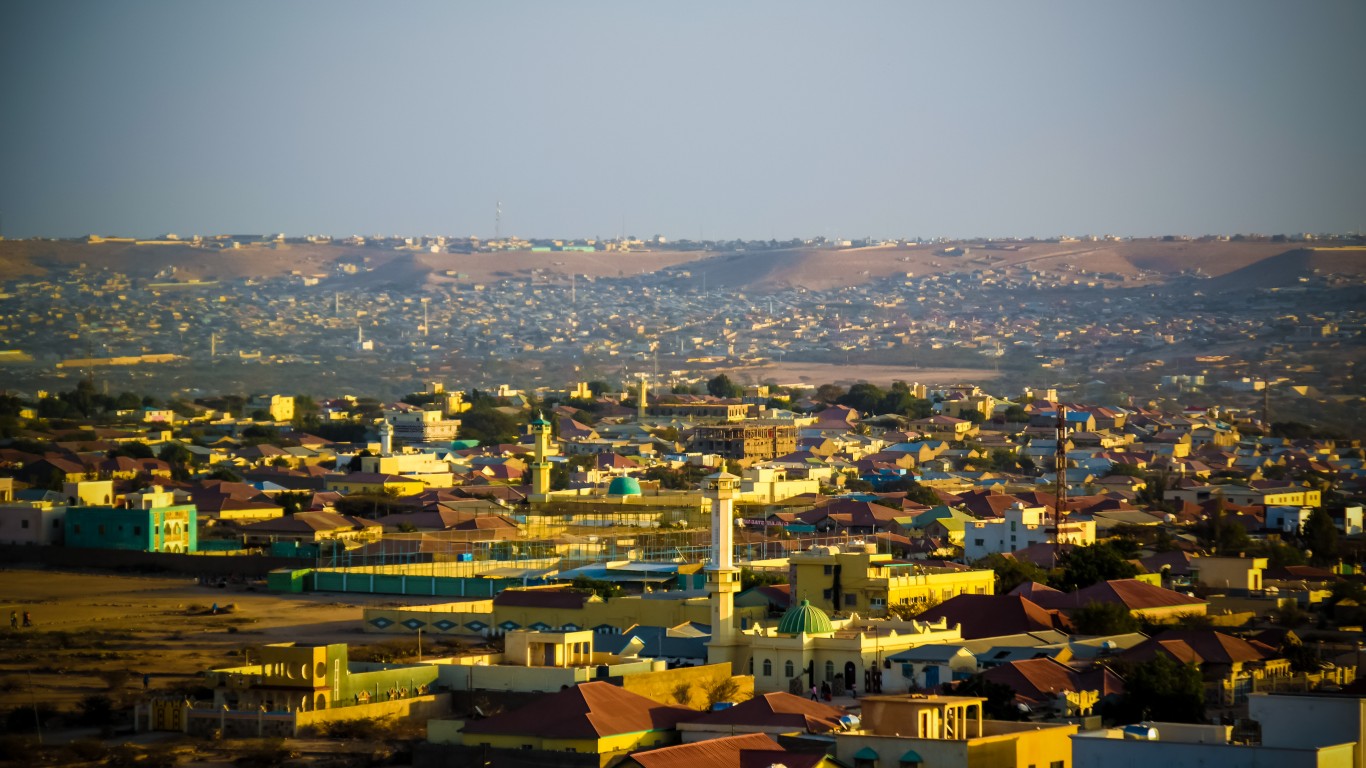
Somalia
> Last updated: Oct 26, 2020
> Population: 15.44 million
> GDP, current US$: $4.72 billion
> GDP per capita, PPP: $314
COVID-19, crime, terrorism, kidnappings, and piracy are the main reasons the State Department has issued a Level 4: Do Not Travel advisory for Somalia. There have been 4,301 confirmed cases of the novel coronavirus in the country since the pandemic began. Adjusted to the population, Somalia’s COVID-19 incidence rate is 278.5 per million people, one of the lowest in the world. Despite this, because of limited medical resources in the country, the CDC has issued its highest warning against traveling to the country — Level 3, Avoid Nonessential Travel.
Kidnapping and murder occur often in the country on the eastern coast of Africa. The U.S. government’s ability to provide assistance and services to American citizens is “extremely limited” because there is no permanent consulate, according to the State Department.
[in-text-ad]
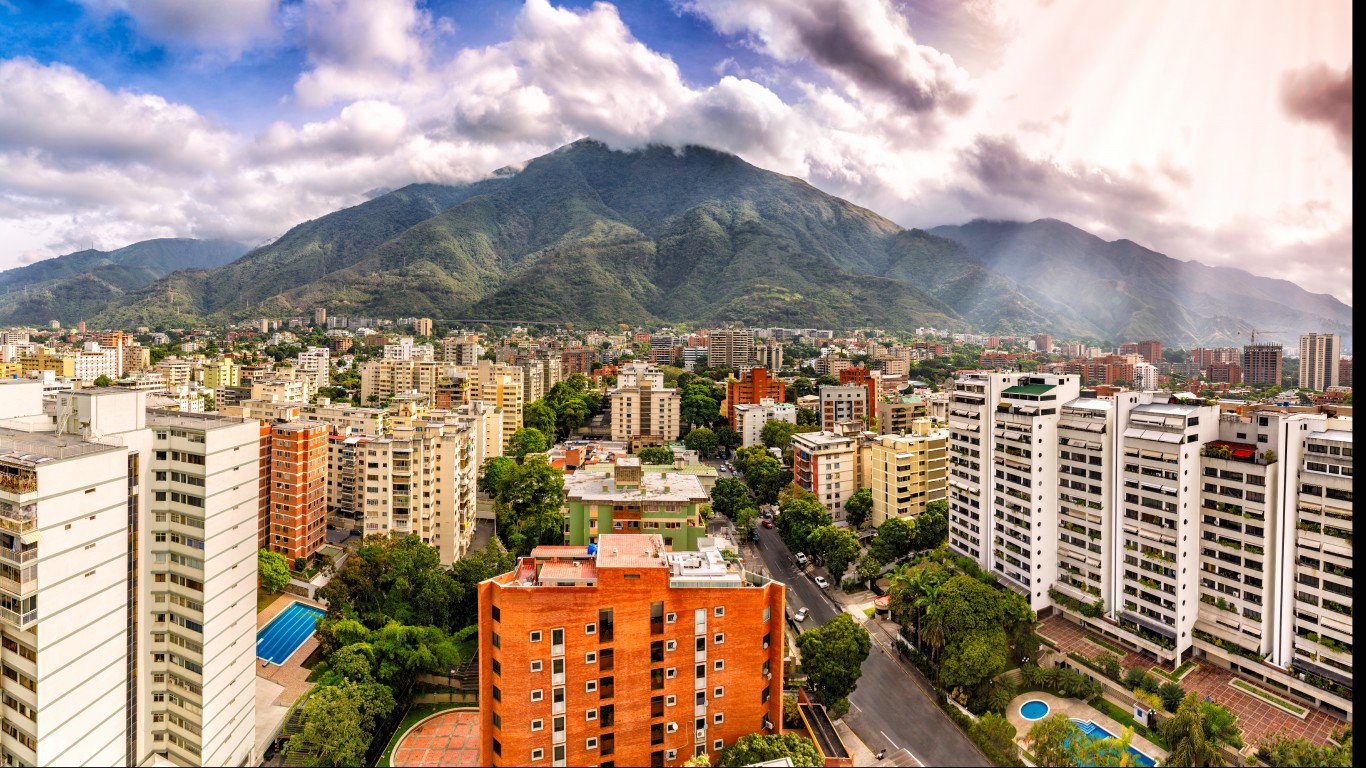
Venezuela
> Last updated: Oct 30, 2020
> Population: 28.52 million
> GDP, current US$: $482.36 billion
> GDP per capita, PPP: $16,054
Because of COVID-19, civil unrest, poor health infrastructure, and high likelihood of crime, kidnapping, and arrest and detention of U.S. citizens, Americans are advised to not travel to Venezuela. Even before the COVID-19 pandemic, outbreaks of infectious diseases such as measles, diphtheria, and malaria were reported in the country. As of Nov. 11, there were 3,346 COVID-19 cases per 1 million people in Venezuela, as reported by the WHO, one of the lower levels of the disease in South America and a fraction of the U.S. COVID-19 incidence of more than 30,000 cases per 1 million U.S. residents.
U.S. relations with Venezuela have been strained since Hugo Chavez assumed the presidency in 1999 and began asserting control over the country’s oil industry. The U.S. has since supported an attempt to take over the presidency and imposed economic sanctions, including on oil trade, which has contributed to the country’s economic crisis.

Central African Republic
> Last updated: Nov 2, 2020
> Population: 4.75 million
> GDP, current US$: $2.22 billion
> GDP per capita, PPP: $984
There have been nearly 5,000 confirmed cases of the novel coronavirus in the Central African Republic (CAR) since the virus was first detected in the country in March 2020. This is about 1,000 cases per million residents, one of the lowest rates in Africa. However, medical care may be limited to those who become sick, according to the CDC.
In addition to the threat of COVID-19, the U.S. government advises against traveling to the landlocked country due to common occurrence of kidnapping, civil disturbance, armed robberies, and carjackings. The State Department warns that it is limited in its ability to assist Americans, should they need any help. Embassy personnel are restricted from traveling outside of the embassy compound.
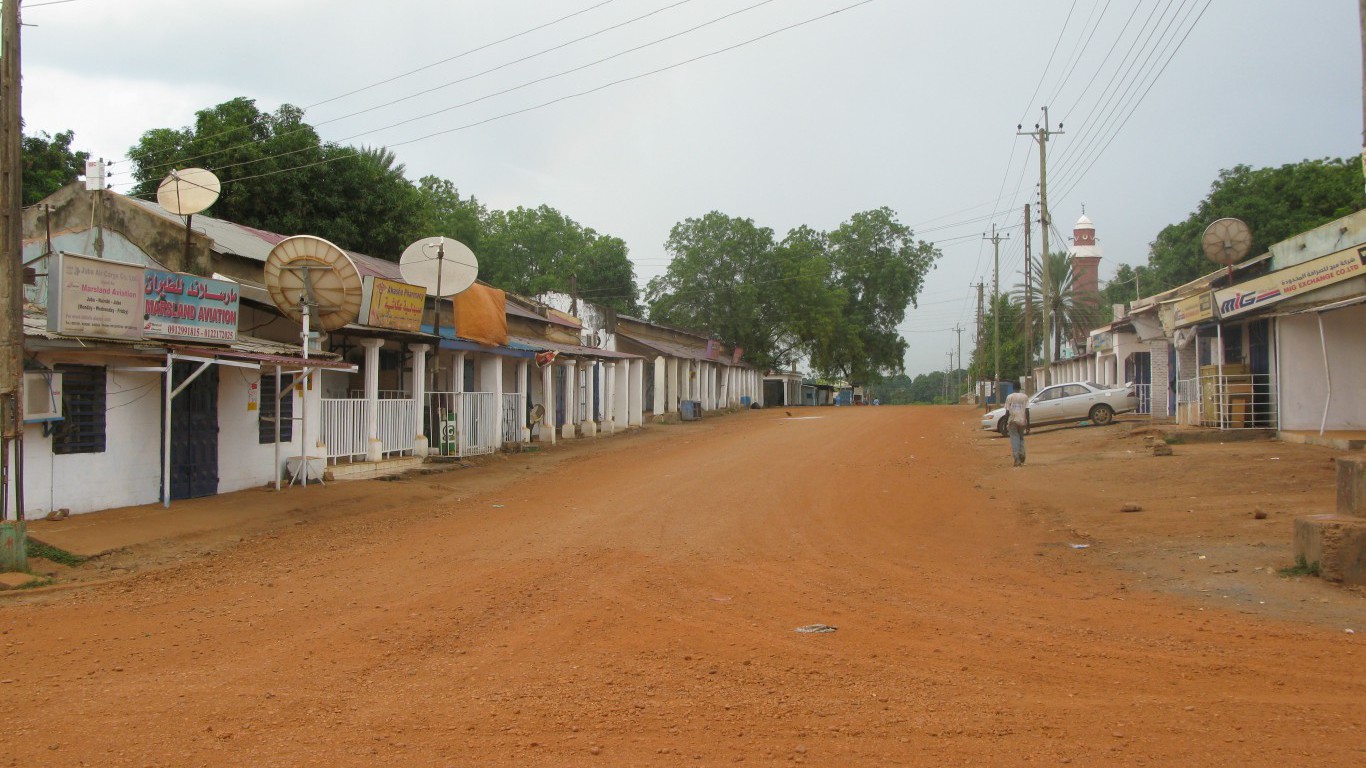
South Sudan
> Last updated: Nov 9, 2020
> Population: 11.06 million
> GDP, current US$: $12.00 billion
> GDP per capita, PPP: $1,496
As of Nov. 9, the latest update on the travel advisory list by the state department, Americans were advised to avoid travel to South Sudan because of COVID-19, crime, kidnapping, and armed conflict. The world’s newest official nation South Sudan, formed in 2011, has been in turmoil since at least 2013, when civil war broke out. Conflict in the country is ongoing, and violent crime — including those committed against foreigners — is reportedly very common.
There were signs of relief on the horizon for the war-torn country in February, when leaders of rival factions, under international pressure, succeeded in creating a coalition government.
Credit card companies are pulling out all the stops, with the issuers are offering insane travel rewards and perks.
We’re talking huge sign-up bonuses, points on every purchase, and benefits like lounge access, travel credits, and free hotel nights. For travelers, these rewards can add up to thousands of dollars in flights, upgrades, and luxury experiences every year.
It’s like getting paid to travel — and it’s available to qualified borrowers who know where to look.
We’ve rounded up some of the best travel credit cards on the market. Click here to see the list. Don’t miss these offers — they won’t be this good forever.
Thank you for reading! Have some feedback for us?
Contact the 24/7 Wall St. editorial team.